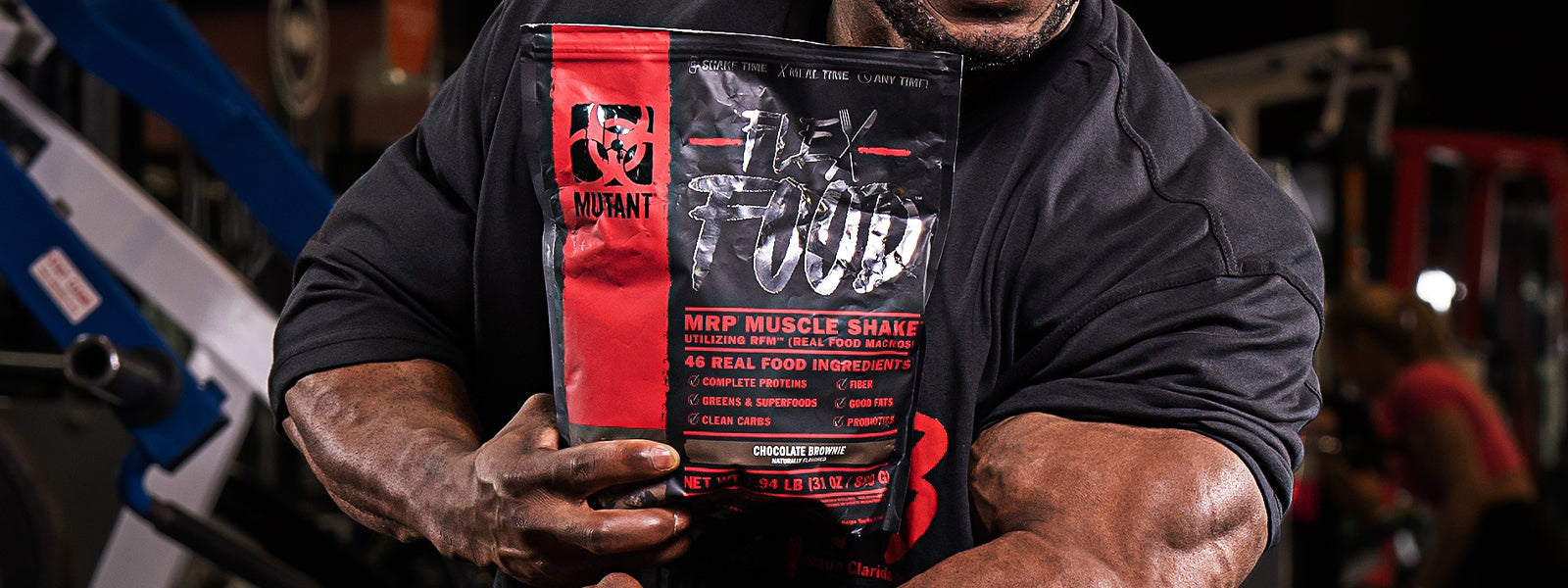Master Your Macros for Maximum Muscle Gain

When it comes to improving your physique and building as much muscle as possible, diet reigns supreme. More importantly, how you navigate the world of macronutrient tracking will ultimately determine your body’s success.
But how much protein helps you gain muscle? What is the ideal blend of macronutrients to get the desired aesthetics? And do some diet structures work better than others? MUTANT is here to crush all these questions, helping you become a muscle-building and macronutrient-tracking expert.
Macro Formula for Gaining Muscle
Your goals will determine your macronutrient breakdown. In general, you want more carbs and protein while staying away from most fat to build muscle while keeping the body fat at bay. On the contrary, this would switch to a higher fat, lower carb diet plan for fat-burning mode, aka the keto diet. (More on that later.)
When training with more volume and intensity, you require more carbohydrates to spur muscle hypertrophy. The combination of high-quality carbs for fuel and high-quality training leads to those carbs getting shuttled to where they need to go – your muscles. Therefore, 50% of your calories should be from carbohydrates, 30% from protein, and 20% from fat, regardless of whether you’re bulking or cutting or a bodybuilder or powerlifter.
One caveat: Fats are nine calories per gram, while protein and carbs are four calories per gram. So you must eat twice as much protein or carbs to get the same caloric load as fat. So that means the sheer volume of fat you should consume while building muscle is relatively low unless you want to gain unwanted pounds.
Hitting these targets becomes clockwork when you meal prep.

Gaining Muscle Macros — Case Study
A 180-pound person who wants to become 200 pounds (90.72 kg) is looking to gain a pound or two each month (assuming they’re trained). Otherwise, they’ll be packing on fat. A common rule surrounding protein is to eat one gram per pound of ideal body weight. This means this individual would consume 200 grams (7.05 oz) of protein daily. After that, it’s simple math to construe the remaining macro breakdown:
-
Protein: 200 grams (7.05 oz), 800 calories (30%)
-
Carbohydrates: 335 grams (11.82 oz), 1340 calories (50%)
-
Fats: 60 grams (2.12 oz), 540 calories (20%)
-
Total Calories: 2680
Building Muscle on Keto
It gets difficult when it comes to building muscle on keto. Ketogenic diets are notoriously zero carbohydrate and high fat. So, being depleted of carbohydrates is bad for building muscle since carbs supply muscle glycogen — fuel for your muscles.
That said, the keto diet is great for dropping weight since much of the weight you lose from keto is water weight since carbs retain water. In addition, the keto diet puts you in ketosis — burning fat as fuel.
The biggest tenet for muscle growth is getting enough fuel in the tank for grueling workouts. Otherwise, you can’t train at peak, which means sub-par gains. Always have quality protein and carb sources at your disposal. Whether you’re on paleo, Mediterranean, standard American (SAD), or another diet, you MUST eat plenty of protein (animal or plant-based) and healthy carbs (starches, cruciferous vegetables, whole grains) if building muscle is top of mind.
How Much Protein Intake Does it Take to Gain Muscle?
Sometimes, adding protein shakes to gain muscle with solid protein is prudent. Protein intake dictates plenty of bodily functions, including the building blocks of muscle fibers. Pulling from the example above, 200 grams (7.05 oz) is a lot of protein to try to ingest on a given day, which can be difficult to do from food alone.
Gain Muscle Via Protein Shake
That’s where something like FLEX FOOD comes into play. FLEX FOOD is a helpful supplement that comes in shake form. The macros are tremendous for building muscle: 25 grams (0.88 oz) of protein, 12 grams (0.42 oz) of clean carbohydrates, and only 3 grams (0.11 oz) of fat make muscle building without storing fat easy and extremely doable.
If you use FLEX FOOD twice daily, you could optimize your body's nutritional profile and take your time in the gym to the next level, especially when fueling your body with a balanced mix of tasty proteins, carbs, and just the right amount of healthy fats.
Another quality protein shake to try is ISO SURGE. ISO SURGE is a quality low-carb and low-fat whey protein with delicious flavors like Big Orange Dreamsicle to satisfy your tastebuds and muscles. Then, achieving an otherworldly physique becomes your focus, and maximizing gym performance becomes your priority.
Article by Terry Ramos




